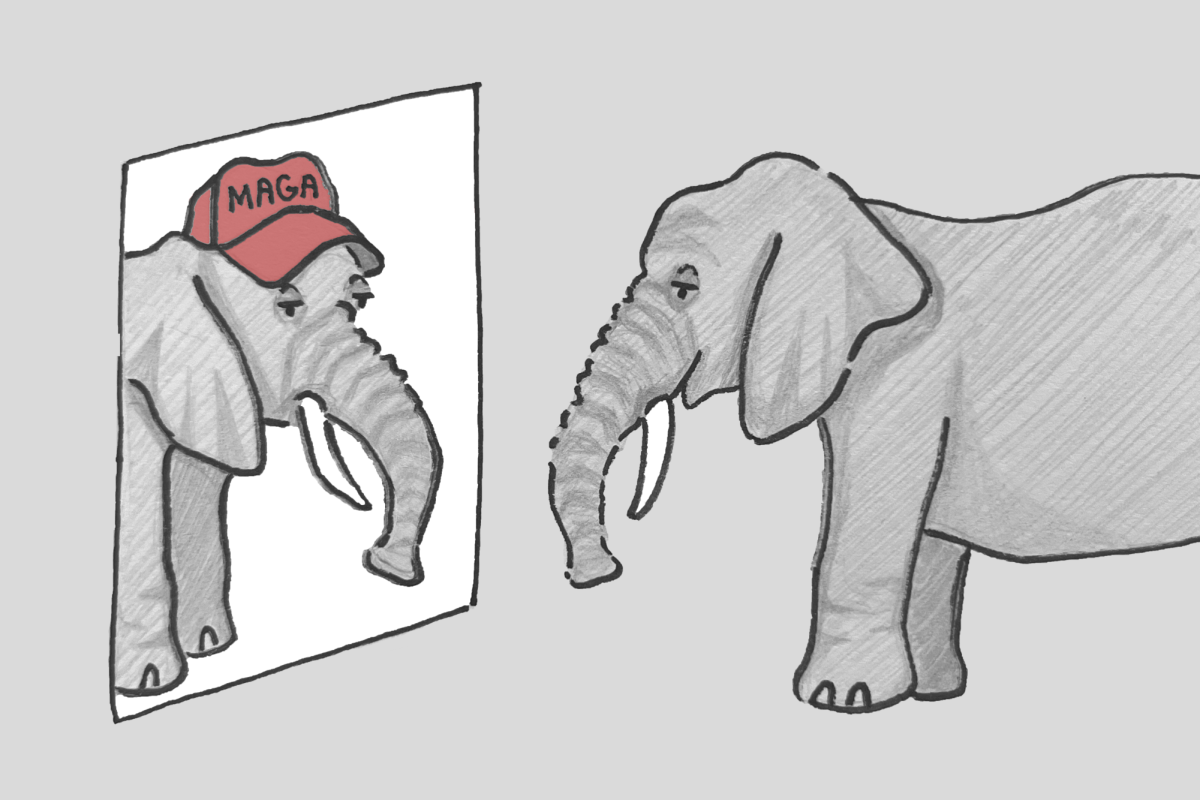In 2012, the University of California committed its campuses (minus the medical facilities) to achieving zero waste, defined as 90-percent diversion from landfills, by 2020. UC San Diego, though, still has a long way to go before it can reach this zero-waste goal. As anyone living on campus knows, this year, Housing Dining Hospitality enacted a few big changes to combat its role in UCSD’s trash creation. Central to these initiatives, it has become harder to get to-go containers and plastic silverware in campus dining halls. Manager of HDH Sustainability Colin Moynihan reports that the initiative reduced use of single-use recyclables by up to 50 percent for food containers. These efforts, coupled with the to-go containers being fully recyclable, will definitely help campus to reach its 90-percent diversion by 2020.
Yet, this HDH initiative and other eco-friendly policies on campus may be smaller leaps in the right direction than they seem. Simply put, the HDH initiative continues to add to the problem of single-use items despite their recyclability and more limited availability. It also does not directly address other vendors on campus, who should be held equally responsible for taking tangible action against UCSD’s trash creation. We can do better.
Thus, while it’s certainly cheaper for HDH to move toward recyclables and have campus vendors do their own thing and transition to solutions that sound nice, the campus needs to move in a different direction. To create a more sustainable campus, instead of single-use recyclables and unused biodegradables, UCSD should introduce reusable metal or glass to-go containers for use in HDH locations and Price Center. This initiative would enable UCSD to achieve its 90-percent diversion and create a more convenient and optimal environmental impact.
Data from UCSD’s campus sustainability manager demonstrated that UCSD only diverted about 34 percent of its trash this year. Unfortunately, one of the easier and cheaper ways to achieve 90-percent diversion from landfills in San Diego lies in single-use recyclables, like the dining hall to-go containers. Still, these recyclables can only be recycled a limited number of times before they end up in landfills for good; National Geographic reports that plastics can only be recycled “2 to 3 times,” and that for each time repurposed, “virgin materials” are added for strength. By using recyclables, UCSD would, by its definition, reduce the amount of waste leaving campus, moving toward the 2020 goal. However, each of these items would soon land in a landfill, meaning we would be taking a less sustainable option for the planet in the long term.
For most people, the obvious alternative to recyclables is biodegradables. In fact, UCSD is currently transitioning vendors in Price Center to biodegradable containers upon the start of their new contracts in an effort to become more eco-friendly. Unknown to most, however, these biodegradables are not the blessing they appear. For one, many biodegradables require perfect conditions to actually biodegrade: 130 degrees from an industrial composter and often must be made from a high-quality bioplastic to be taken in by these composters. According to Moynihan, “Compostable ware typically requires added processing before it can be composted, which is not currently available to use [around the San Diego area].” The kicker is that even if composting was more accessible locally, students have historically mixed up recyclables and compostables, harming both causes.
Other types of biodegradables are also not without fault; they can take decades to decay, harming wildlife and the ozone layer in the process. What’s clear is that biodegradable packages will not save the environment and will not help campus reach 90-percent diversion, if they just end up in landfills.
Offering metal to-go containers would be a step in the right direction for all of campus because they are a truly sustainable solution and would help normalize bringing your own to-go containers. Currently, Moynihan is piloting a project that will roll out Winter Quarter of 2019 that will offer “reusable to-go containers in [their] John Muir College facilities [where] residents can opt to have their food served in a reusable to-go box and exchange their container for a new one on their next visit, at no cost to them.”
While the exact details of this program are unknown, for these to-go containers to have the largest impact, they will ideally be made of metal or glass and be available soon in several locations, including campus vendors, for use by students, faculty, and campus employees. Needless to say, the more widespread this program is, the less recyclable to-go containers and useless biodegradable containers would be used on campus. For this ideal scenario to come into fruition, the financial burden may fall solely on HDH, but it would not necessarily have to.
Incorporating the use of these containers, on-campus vendors via their contracts (as was done with biodegradables) would help to shoulder the financial burden of these containers. In fact, chain pop-ups in Price Center, like Panda Express, may prefer to use reusable containers instead of having to order different types of to-go ware for UCSD and their other locations or to switch the company completely to biodegradables. They, as well as HDH, would also have no need to buy regular to-go containers again and therefore eliminate that expense with this program.
Additionally, less trash creation means that UCSD would spend less money on waste collection. As reported by Facilities Management, last year, UCSD spent almost a million dollars on campus waste removal. Therefore cutting the use of to-go containers in a majority, or all, of campus eateries would save the university money that could instead be used to fund this project.
While it’s unlikely these containers will be made of metal or glass due to their steeper cost, these materials offer the most environmentally conscious option. For example, glass and metal containers have more longevity than single-use recyclables and weak biodegradable products. Most importantly, when they wear out, they can be recycled completely and indefinitely without the need of additional virgin materials to support them. Meanwhile, stronger more durable biodegradables take longer and more intense conditions to break down due to additives. Thus, metal or glass containers would do good on campus and beyond.
Clearly, UCSD can expect many more positive changes in the future as it attempts to continue to revolutionize its waste policies. Still, as students, let us not be afraid to demand better.





